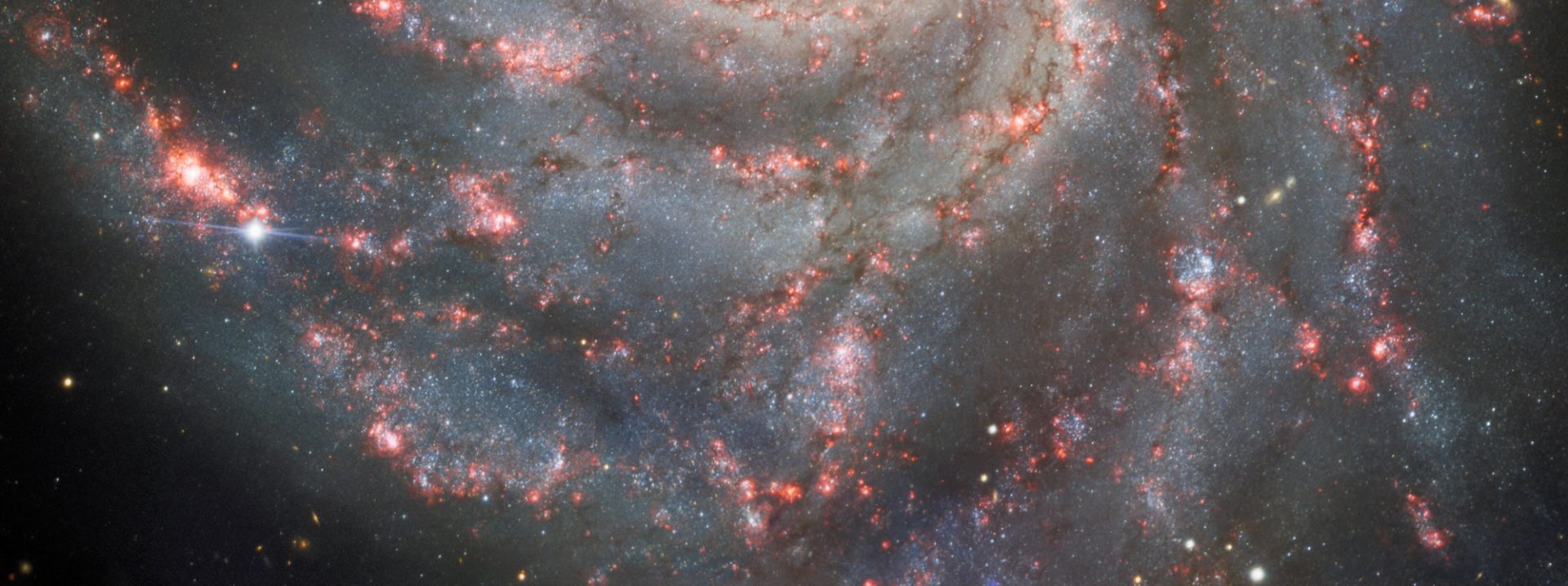POSSIBLE SUPERNOVA IN NGC 6632
Zhangwei Jin(Ningbo, Zhejiang, China) and Xing Gao (Urumqi, Xinjiang, China), report the discovery of a possible supernova (mag approximately 16.4) on a 40-s survey image (limiting mag about 19.5)taken by Xing Gao in Xingming ObservationSky Survey(C42) around Mar .24.91344 UT,2013. using an unfiltered CCD ( + Celestron C14 Schmidt-Cassegrain telescope D=350-mm @f/6.9 ).the new object approximately located at R.A. =18h 25m 01s.98 Decl.=+27°31’53”.7(equinox 2000.0). Which is about 12.6″ west and 13.3″ south of the center of the NGC6632.
Nothing is visible at this position at this position on archival images taken on Mar.20,2013. (limiting mag 19.2) or on the DSS(POSS2/UKSTU Red) from May. 03,1989(limiting mag about 19.8)
NET UCAC-3
XM44ZJ C2013 03 24.91344 18 25 01.98 +27 31 53.7 16.4 V C42
All images can be seen from: http://www.xjltp.com/XOSS/XM44ZJ/XM44ZJ.htm
C42,Xingming Observatory, Mt. Nanshan. Observers Z.Jin, X.Gao ,Measurers Z.Jin 0.35-m f/6.9 Schmidt-Cassegrain telescope and CCD.
__________________________________________________________________
<–StartFragment –>
Electronic Telegram No. 3481
Central Bureau for Astronomical Telegrams
INTERNATIONAL ASTRONOMICAL UNION
CBAT Director: Daniel W. E. Green; Hoffman Lab 209; Harvard University;
20 Oxford St.; Cambridge, MA 02138; U.S.A.
e-mail: cbatiau@eps.harvard.edu (alternate cbat@iau.org)
URL http://www.cbat.eps.harvard.edu/index.html
Prepared using the Tamkin Foundation Computer Network
SUPERNOVA 2013bi IN NGC 6632 = PSN J18250198+2731537 = PSN J18250195+2731541
Zhangwei Jin, Ningbo, Zhejiang, China; and Xing Gao, Urumqi, Xinjiang,
China, report the discovery of an apparent supernova (mag approximately 16.4)
on an unfiltered 40-s survey CCD image (limiting mag about 19.5) taken by Xing
Gao in the course of the Xingming Sky Survey around Mar. 24.9134 UT using a
Celestron C14 telescope at Mt. Nanshan. The new object is approximately
located at R.A. = 18h25m01s.98, Decl. = +27d31’53”.7 (equinox 2000.0), which
is about 12″.6 west and 13″.3 south of the center of NGC 6632. The Xingming
images have been posted at URL http://www.xjltp.com/XOSS/XM44ZJ/XM44ZJ.htm.
The variable was designated PSN J18250198+2731537 when it was posted at the
Central Bureau’s TOCP webpage and is here designated SN 2013bi based on the
spectroscopic confirmation reported below; a later independent discovery
posting to the TOCP by T. Puckett yielded a second preliminary designation
(PSN J18250195+2731541). Additional magnitudes for 2013bi (via unfiltered
CCD unless noted otherwise): 1989 May 3, [19.8 (red Digitized Sky Survey
plate; via Jin and Gao); 2013 Mar. 20, [19.2 (Xingming archival images);
25.462, 15.7 (L. Elenin, Lyubertsy, Russia; and I. Molotov, Moscow; three
300-s images remotely taken with a 0.45-m f/2.8 telescope at the ISON-NM
Observatory near Mayhill, NM, USA; limiting mag about 19.7; position end
figures 02s.00 +/- 0″.11, 54″.0 +/- 0″.1; UCAC-4 reference stars; image
posted at http://spaceobs.org/images/TOCP/PSNJ18250198+2731537-20130325.png);
25.436, 15.6 (Joseph Brimacombe, Cairns, Australia; remotely with a 51-cm
RCOS telescope + infrared filter located at the New Mexico Skies observatory
near Mayhill; bandpass > 700 nm; position end figures 01s.98, 54″.0; image
posted at website URL http://www.flickr.com/photos/43846774@N02/8594682460/);
Apr. 3.98, 16.0 (Gianluca Masi; remotely with the 43-cm Virtual Telescope
robotic facility in Italy); 9.914, 16.4 (Jin and Gao; position end figures
01s.96, 54″.0); 11.469, 16.0 (Puckett; position end figures 01s.95, 54″.1;
offset 14″.5 west, 12″.7 south).
D. Milisavljevic, E. Berger, and A. Soderberg, Harvard-Smithsonian Center
for Astrophysics; and E. O. Martin, MMT Observatory, report that a
low-dispersion spectrogram (range 335-855 nm), obtained on Apr. 14.5 UT with
the 6.5-m MMT reflector (+ Blue Channel), shows PSN J18250198+2731537 = SN
2013bi to be a type-II supernova. Cross-correlation with a library of
supernova spectra using the “Supernova Identification” code (SNID; Blondin and
Tonry 2007, Ap.J. 666, 1024) shows good matches with the type-IIP event 2004et
at approximately 2-4 weeks after maximum light. Using a redshift of z = 0.016
for the host galaxy (NGC 6632) as measured from narrow nebular emission lines,
they estimate the minimum of the H_alpha P-Cyg absorption to be blueshifted by
approximately -9400 km/s.
NOTE: These ‘Central Bureau Electronic Telegrams’ are sometimes
superseded by text appearing later in the printed IAU Circulars.
(C) Copyright 2013 CBAT
2013 April 20 (CBET 3481) Daniel W. E. Green
